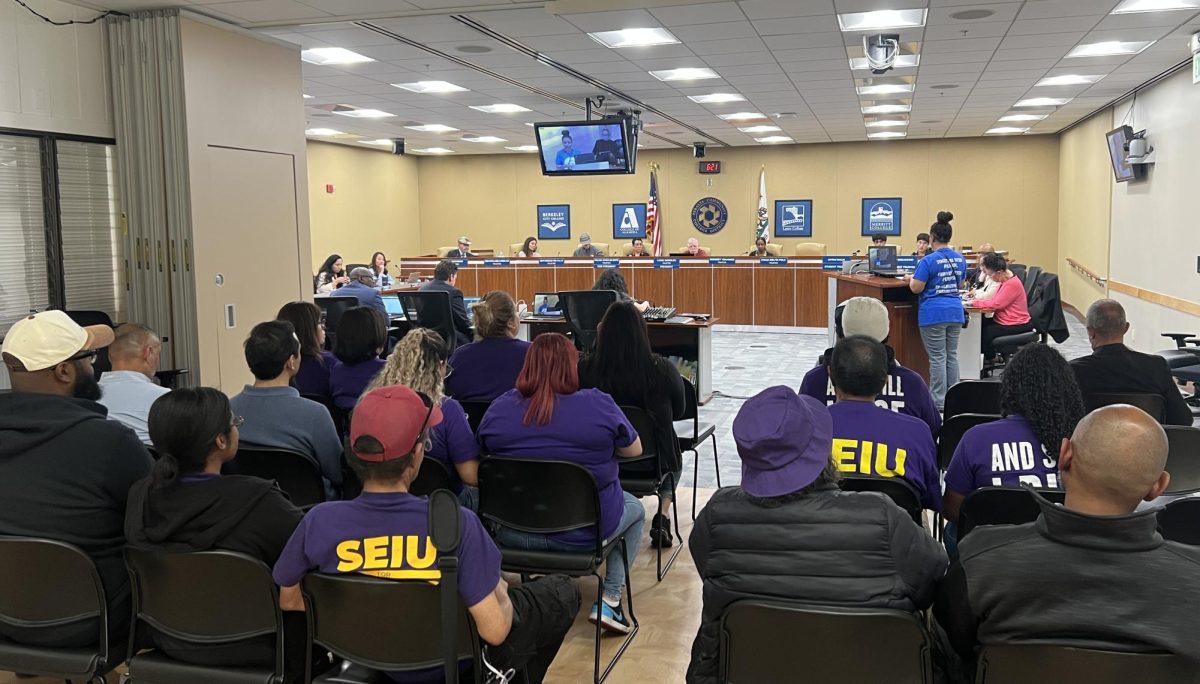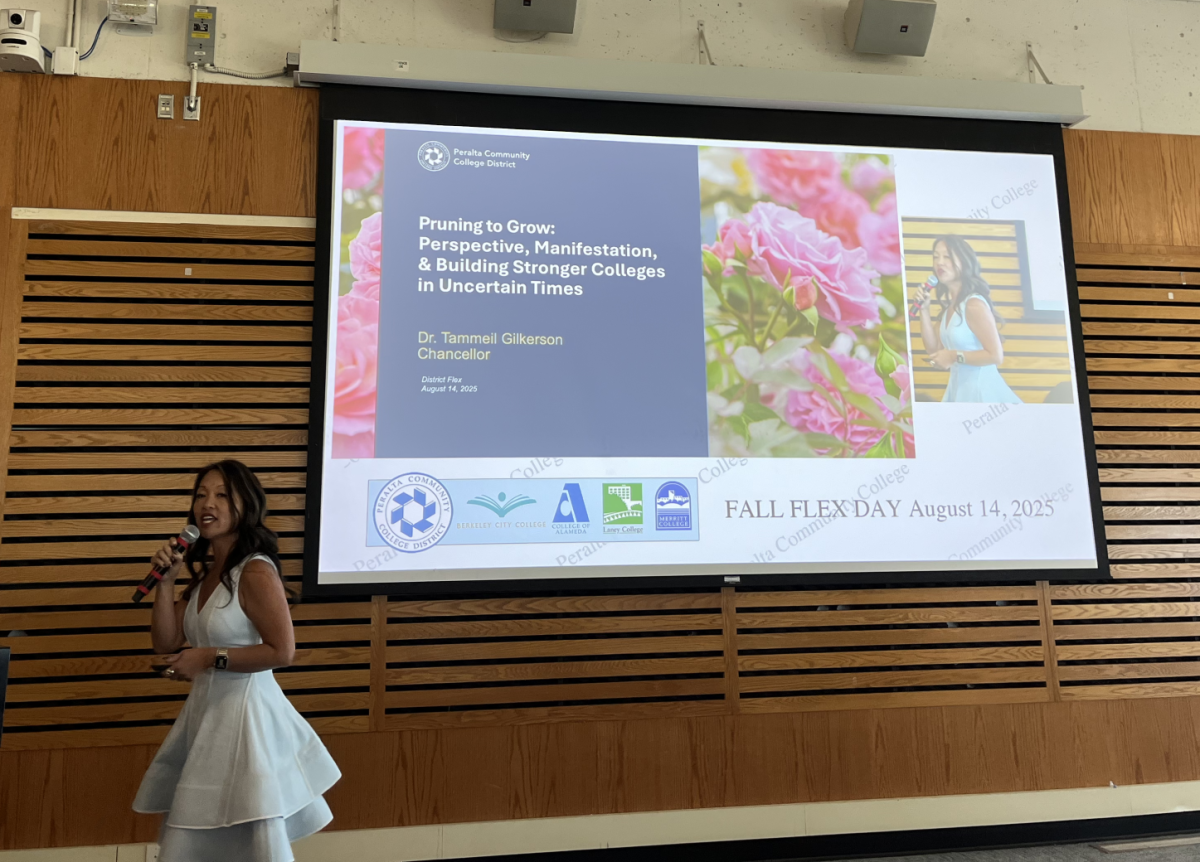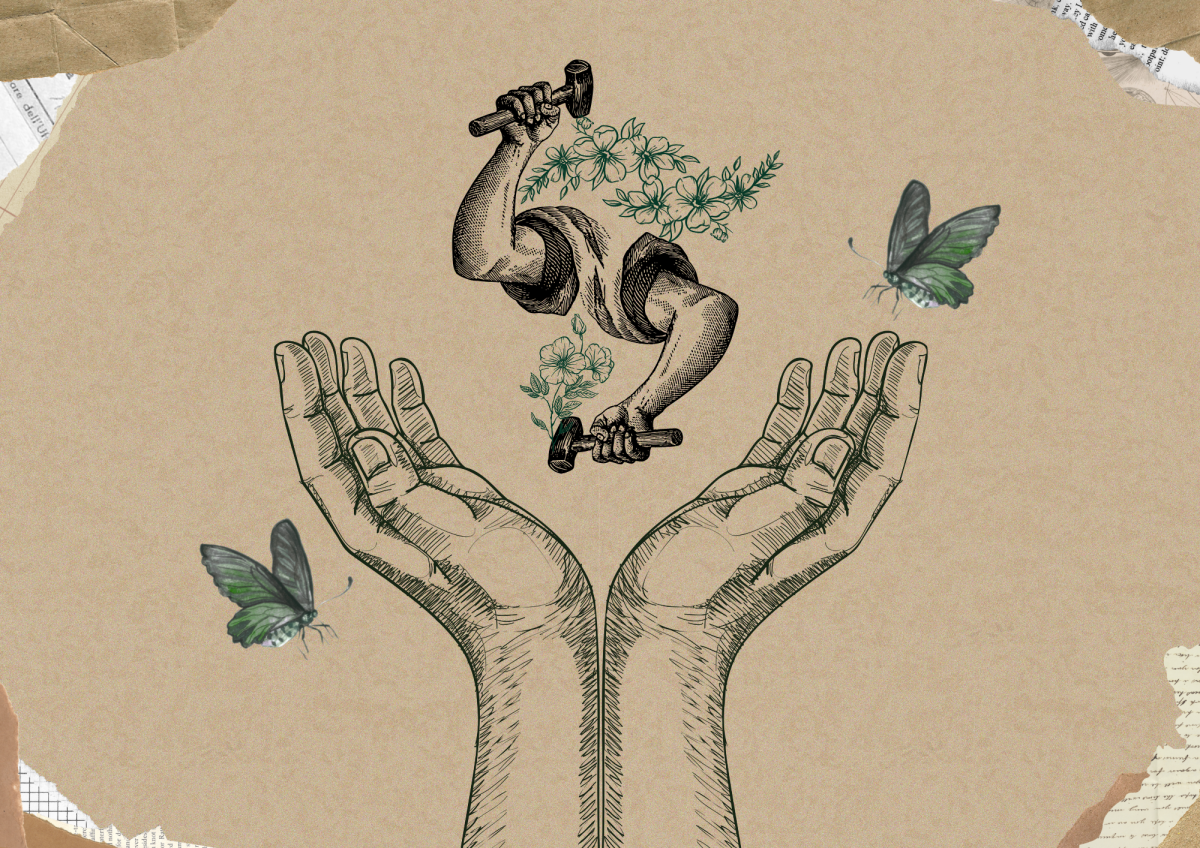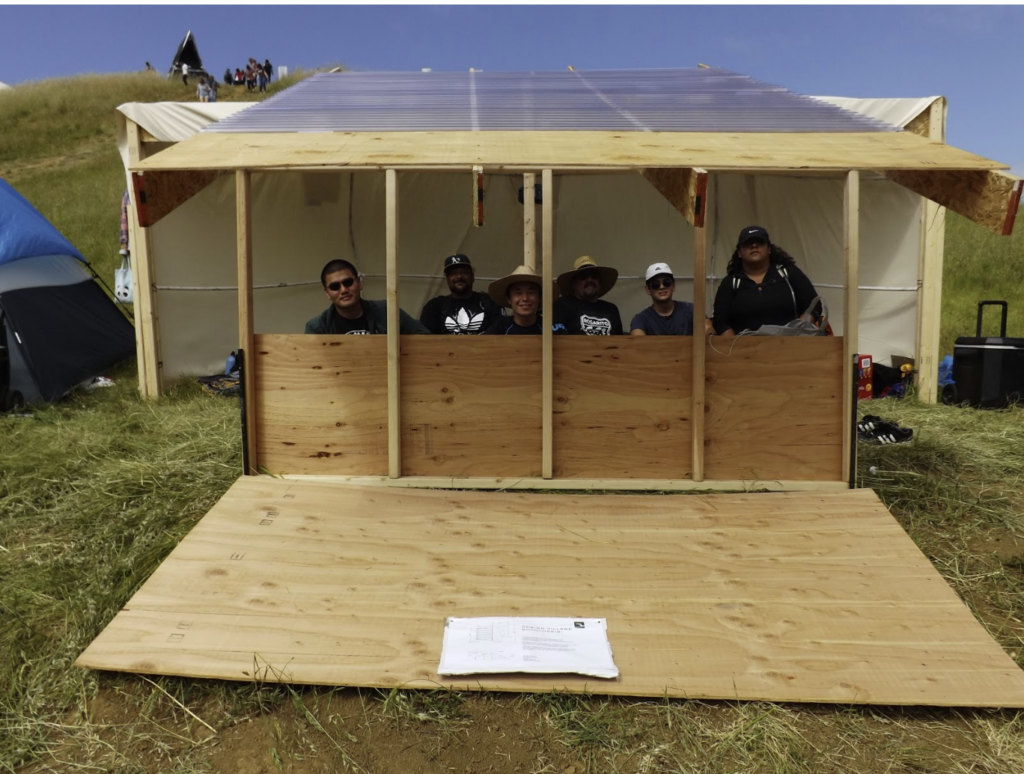As night fell over the Laney college campus there was unusual commotion, Architecture Club students could be spotted loading construction materials on trucks. They then drove hours through the night towards Central California.
Their destination was Design Village, an annual architecture event hosted April 26–28 at California Polytechnic San Luis Obispo’s experimental design laboratory known as Poly Canyon.
Hundreds of Cal Poly, community college and high school students designed habitable structures, moved them to Poly Canyon, reconstructed them, then lived in the structures for the weekend. Student’s were only allowed to use off-grid electrical sources.
Each year, the theme of Design Village changes, and this year the theme was “Synthesis.”“The goal of this Design Village is to use one of the five human senses to convey a message, while using environmentally friendly materials,” said Laney architecture student and first time attendee Dulce Sotelo.
On the morning of April 26, students began checking into the event and moving heavy structural components through the canyon. As the day went on, the chilly temperatures of the morning gave way to much warmer, 80-degree weather.
“There’s this energy from everyone around us. You can tell that people want to be here and put effort in their work”, Sotelo said. “Everyone had to haul all their materials one mile into the canyon, but no one complained. People were more focused on the structures themselves.”
By the early evening, well over 40 student-designed structures filled the event grounds. Laney students built three structures: a deconstructed pyramid known as the “Neo-Pyramid;” a half-spherical structure with an awning known as “Miso Soup;” and “Team Kermit, a minimalistic, octogonal structure.
After teams finished building their structures, an open schedule in the evening allowed students to explore Poly Canyon, inspect structures and socialize with other attendees. Laney architecture student Maral Manlai was keen on the event’s organization.
“I’m an international student (from Mongolia) and from my experience, going to different events and places will give you the opportunity to interact with people you never would have otherwise,” Manlai said. “It’s great that I can talk to so many other architecture students. It’s also a great opportunity to work on my English skills.”
Judgment day came on April 27. Judges from Cal Poly inspected each dwelling as students held presentations on the design of their structures. The criteria included sustainability, craftsmanship and theme conformity.
After the judging, students were free to take guided hiking tours, explore the Cal Poly campus or check out the greater San Luis Obispo area.
Attendees regrouped at Poly Canyon in the evening, enjoying a jazz concert followed by an awards ceremony at the site’s geodesic dome. The evening was topped off with a dance party, and the students spent a second night in the structures they built.
While Laney’s entries did not place in the competition, four-time Design Village attendee Jorge Navarro said there is much more to Design Village than competition.
“The teams that come down become more unified, because we face new challenges every year and work to overcome them,” he said. “We grow as architects, and in working to overcome these challenges, people become closer, it improves our teamwork and lets people make new friends.”


























